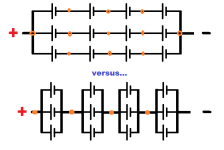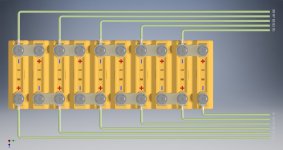bobbill
100 W
Am dim nooby. But understand me stuff, like balancing cells is a call made when a BMS detects an average P cell group is at too low a level and shoots current to the group out of whack, to equalize or balance the group needing it.
How it does this is accepted, but does it make a difference how BMS finds out?
Or, does it make a difference where the balance wires are placed, as long is all are the same and can detect parallel group's averages?
IOW can poor balance detectecd on the Serial circuits?
How it does this is accepted, but does it make a difference how BMS finds out?
Or, does it make a difference where the balance wires are placed, as long is all are the same and can detect parallel group's averages?
IOW can poor balance detectecd on the Serial circuits?



